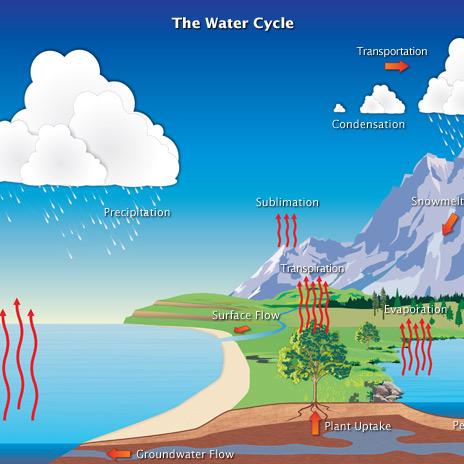Why Is It Difficult To Study Earth’s Interior?
Studying the Earth’s interior is incredibly difficult because it is inaccessible and difficult to measure directly. The Earth’s layers are composed of different materials, each with different properties. The inner core is made of iron and nickel, and is extremely dense and hot. The mantle is composed of hot, dense rocks. The crust is composed of lighter rocks, and is much cooler than the deeper layers. Studying these deep layers is made difficult by the fact that they are so far below the Earth’s surface and are inaccessible to humans. To study the interior of the Earth, scientists must rely on indirect methods such as seismology, geochemistry, and geophysics. These methods allow scientists to measure the physical properties of the Earth’s interior, but they cannot directly observe it. Additionally, the Earth’s interior is constantly changing, making it difficult to draw conclusions about its structure and composition.
Understanding Earth’s Interior Structure
is an incredibly complex task due to the sheer depth of its layers. The core, mantle, and crust of the planet are separated by thousands of kilometers in distance, making it impossible to access and study the full scope of Earth’s interior. In addition to this, the immense pressure of the planet’s immense gravity makes it difficult to gather data in the depths of Earth’s core. The temperature and pressure within Earth’s interior also make it difficult to conduct experiments and analyze data. As a result, scientists have had to rely on different techniques, such as seismic wave analysis, to gain insight into the structure and composition of Earth’s interior. Despite these challenges, researchers have been able to gain a comprehensive understanding of the structure and composition of Earth’s interior, allowing us to better understand the dynamics that shape the planet.
Challenges of Studying Earth’s Interior
Studying the Earth’s interior presents many difficulties due to the fact that it is impossible to directly observe it. As a result, scientists must rely on various indirect methods to learn about the Earth’s interior. This includes seismology, geochemistry, geophysics, and more. Each of these methods has its own set of challenges.
Seismology, which relies on seismic waves generated by earthquakes, can provide information on the Earth’s interior structure, but seismic waves attenuate quickly with depth and can be blocked by certain materials. Geochemistry, which studies the chemical composition of rocks and minerals, can provide information on the composition of the Earth’s interior, but is limited to data from the Earth’s surface. Geophysics, which uses gravitational and magnetic fields to measure the density of the Earth’s interior, is hampered by the Earth’s complex surface features and the fact that the Earth’s magnetic field is constantly changing.
Overall, the difficulties associated with studying the Earth’s interior require researchers to be creative and employ a variety of techniques to learn about the Earth’s interior. By combining data from multiple sources, scientists can gain insight into the Earth’s interior structure and composition. Ultimately, this will help us better understand the processes that shape the Earth and its environment.
The Role of Earthquakes in Understanding Earth’s Interior
Earthquakes are one of the most powerful natural phenomena and offer us a glimpse into the inner workings of our planet. Earthquakes occur when stress builds up inside the Earth’s crust, causing rocks to fracture and move. When this happens, seismic waves are released, allowing us to see the structure of the Earth’s interior. However, the data we receive from earthquakes is limited, and it is difficult to gain a complete understanding of the Earth’s interior.
In order to study the Earth’s interior in more detail, geologists rely on seismological methods. Seismology is the study of the Earth’s interior using seismic waves. By recording and analyzing the seismic waves released by earthquakes, scientists can learn more about the Earth’s interior, including the composition and temperature of the rock layers deep within the Earth.
Despite the advances in seismology, it is still difficult to study Earth’s interior due to its great depth and the limited data that we can collect. Also, seismic waves lose much of their energy as they pass through the Earth’s crust, making it difficult to accurately measure the properties of the rocks deep in the Earth.
The study of Earth’s interior is important for understanding the forces that shape our planet. Earthquakes provide a window into the Earth’s interior, but the data they provide is limited. Therefore, geologists must rely on seismology to gain a better understanding of the Earth’s interior.

Analyzing Earth’s Magnetic Field to Understand Its Interior
Studying the Earth’s interior can be very difficult due to its enormous size and depth. Scientists must use a variety of methods to gain insight into what lies beneath the Earth’s surface. One technique that is used to study the Earth’s interior is to analyze Earth’s magnetic field. By doing so, scientists can infer the nature of the Earth’s core and mantle, as well as understand the processes that occur within them.
The Earth’s magnetic field is generated by the motion of liquid iron in its core. This motion creates electric currents, which in turn produce a global magnetic field. By studying the Earth’s magnetic field, scientists can map the Earth’s interior and gain a better understanding of what is going on inside.
Earth’s magnetic field can also be used to study the Earth’s mantle, which is the layer between the crust and the core. The mantle is made up of hot, moving rock material and is responsible for the movement of continental plates. By studying the Earth’s magnetic field, scientists can gain an understanding of how the mantle is moving and how it contributes to the Earth’s overall dynamics.
Overall, analyzing Earth’s magnetic field is a great way to gain insight into its interior. By studying the Earth’s magnetic field, scientists can gain a better understanding of the Earth’s core and mantle, which can then be used to better study the Earth’s dynamics and processes.
Impact of Technology on Studying Earth’s Interior
Studying the interior of Earth is no easy feat. With the planet’s mantle and core being thousands of kilometers deep, the task of understanding its composition and structure is a difficult one. Technology has made it easier to study Earth’s interior, but it still presents a challenge. For instance, seismic waves, which are used to map the Earth’s interior, can be distorted by the Earth’s atmosphere, making it difficult to get accurate readings. Additionally, the technology needed to measure the temperature and pressure of the Earth’s interior is expensive and difficult to maintain.
Advances in technology, however, have allowed scientists to develop new methods of studying Earth’s interior. These methods include using sound waves to map the Earth’s interior and measuring the magnetic fields of the Earth’s core. Additionally, remote sensing techniques and satellite imagery are being used to study the surface of the Earth and its subsurface structures.
In conclusion, technology has made it easier for scientists to study Earth’s interior, but it still presents a challenge. New methods are being developed to measure the temperature and pressure of the Earth’s interior, as well as to map its subsurface structures. However, the accuracy of these measurements is often limited due to the Earth’s atmosphere distorting seismic waves, and the costly nature of the technology used to measure the Earth’s interior.
Future Directions for Research on Earth’s Interior
Studying the interior of Earth is no small feat. With the development of new technologies and the advancement of existing ones, researchers are beginning to gain a better understanding of the structure and composition of Earth’s interior. However, it is still challenging to obtain accurate data and gain insights into the processes occurring deep within Earth.
To build a more complete picture of Earth’s interior, researchers need to focus on a range of topics. This includes studying the mantle convection, seismic activities, and the thermal properties of the lithospheric plates. Additionally, further research into the seismic anisotropy and seismic wave propagation within Earth’s mantle is necessary to better understand how the mantle affects the dynamics of Earth’s interior.
At the same time, researchers have to consider the effects of human activities on Earth’s interior. For instance, the impact of global warming, land use changes, and industrial activities can all have a profound effect on the thermal and seismic properties of Earth’s interior.
Ultimately, more research is needed to fully understand Earth’s interior. Researchers must continue to develop new technologies and refine existing ones in order to gain a more complete picture of the structure and composition of Earth’s interior. With this knowledge, researchers can develop better models and gain a better understanding of the processes occurring within Earth.
FAQs About the Why Is It Difficult To Study Earth’s Interior?
1. What tools are used to study the Earth’s interior?
Answer: Scientists use seismic waves, magnetic field measurements, and gravity measurements to study the Earth’s interior.
2. How far down can we see into the Earth’s interior?
Answer: It is difficult to see very far into the Earth’s interior. Most of what we know about the Earth’s interior is based on evidence gathered from seismic waves, which can travel tens of thousands of kilometers below the surface.
3. What are the main layers of the Earth’s interior?
Answer: The Earth’s interior is divided into four main layers: the crust, the mantle, the outer core, and the inner core.
Conclusion
Studying the Earth’s interior is difficult due to the sheer depth of the interior and the lack of direct access. The best we can do is gather data from earthquakes, volcanic eruptions, and other seismic events, as well as analyzing the atmosphere to infer the properties of the Earth’s interior. With the limited data available, it is difficult to get an accurate picture of what lies beneath our feet. Despite the difficulties, ongoing research and new technologies are helping us to build a better understanding of the Earth’s interior.






